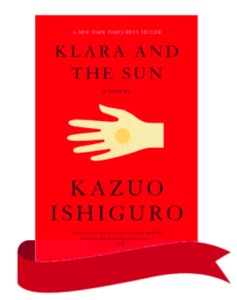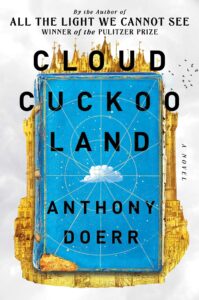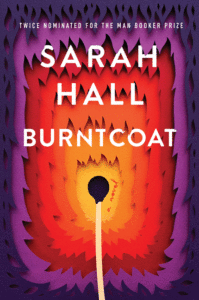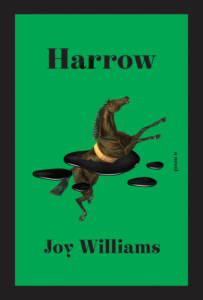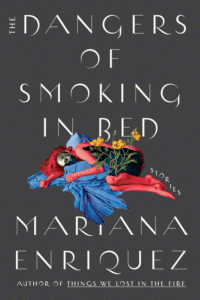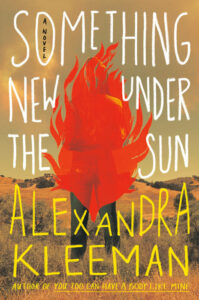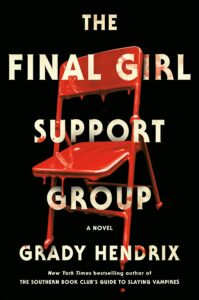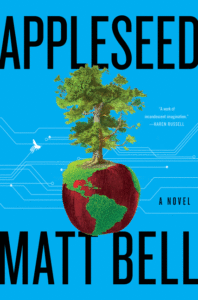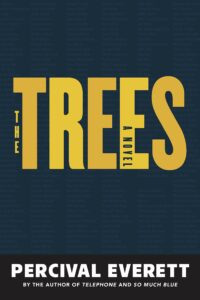
The Best Reviewed Sci-Fi, Fantasy, and Horror Books of 2021
Featuring Kazuo Ishiguro, Alexandra Kleeman, Jeff VanderMeer, Anthony Doerr, and more
Well, friends, another grim and grueling plague year is drawing to a close, and that can mean only one thing: it’s time to put on our Book Marks stats hats and tabulate the best reviewed books of the past twelve months.
Yes, using reviews drawn from more than 150 publications, over the next two weeks we’ll be revealing the most critically-acclaimed books of 2021, in the categories of (deep breath): Memoir and Biography; Sci-Fi, Fantasy, and Horror; Short Story Collections; Essay Collections; Poetry; Mystery and Crime; Graphic Literature; Literature in Translation; General Fiction; and General Nonfiction.
Today’s installment: Sci-Fi, Fantasy, and Horror.
Brought to you by Book Marks, Lit Hub’s “Rotten Tomatoes for books.”
1. Klara and the Sun by Kazuo Ishiguro
(Knopf)
23 Rave • 17 • Positive • 3 Mixed
“Klara and the Sun confirms one’s suspicion that the contemporary novel’s truest inheritor of Nabokovian estrangement—not to mention its best and deepest Martian—is Ishiguro … Never Let Me Go wrung a profound parable out of such questions: the embodied suggestion of that novel is that a free, long, human life is, in the end, just an unfree, short, cloned life. Klara and the Sun continues this meditation, powerfully and affectingly. Ishiguro uses his inhuman, all too human narrators to gaze upon the theological heft of our lives, and to call its bluff … Ishiguro keeps his eye on the human connection. Only Ishiguro, I think, would insist on grounding this speculative narrative so deeply in the ordinary … Whether our postcards are read by anyone has become the searching doubt of Ishiguro’s recent novels, in which this master, so utterly unlike his peers, goes about creating his ordinary, strange, godless allegories.”
–James Wood (The New Yorker)
2. Cloud Cuckoo Land by Anthony Doerr
(Scribner)
21 Rave • 5 Positive • 1 Mixed • 3 Pan
Listen to an excerpt from Cloud Cuckoo Land here
“If All the Light We Cannot See was a lyrical tour de force, Cloud Cuckoo Land is a David Mitchell-esque maze of interlocking stories and characters in three different timestreams, past, present, and future. Doerr’s reach is galactic, but there’s also a surprising intimacy here, as the elements orbit around a Greek text that has all but vanished … In a big fiction year—and make no mistake, 2021 has been epic—Cloud Cuckoo Land stands out. The trope of the child in jeopardy is hardly original, but Doerr digs deep … Doerr guides us through lavish backstories and broken hearts, war and peace, each chapter a masterstroke … Layer by layer, Doerr builds a cathedral of a novel, rich with naves and transepts and soaring stained-glass windows, and yet he keeps us close to the pages, turning and turning. An intricate design emerges: Doerr’s a soothsayer obsessed with our survival, fearing the worst … a profound compassion undergirds the novel as the pieces snap into place … Doerr’s characters are astoundingly resilient, suggesting that we may yet save ourselves, with literature an essential tool. Their journeys leave footprints across our hearts … With its breathtaking ambition and beautiful prose Cloud Cuckoo Land is the anti-Twitter novel we need, unabashedly celebrating the power of books and their caretakers.”
–Hamilton Cain (Boston Globe)
3. Burntcoat by Sarah Hall
(Custom House)
12 Rave • 8 Positive • 4 Mixed
Listen to an interview with Sarah Hall here
“What’s fascinating here…are Hall’s revelations about illness and its relationship to creativity and to sexuality … Hall has always written sex well and seriously, has always allowed desire to effloresce even in the most unlikely situations, but now she makes sex the heart of the book, describing it lyrically … The scenes where the feverish man and the exhausted woman come together in their infected bed have an extraordinary erotic intensity; it is there also in the brutally visceral descriptions of his final decline … This terrible, ambivalent closeness takes all of Hall’s magnificent powers as a novelist to describe. I was left feeling that only she could write it. Just as powerful are her awed descriptions of the virus itself … The hope in this sparse, sumptuous, brilliant book is that the work of finding meaning and truth can be continued even in extremity, even as art and love slip away.”
–Laura Feigel (The Guardian)
4. Harrow by Joy Williams
(Knopf)
15 Rave • 2 Positive • 2 Mixed
Read an interview with Joy Williams here
“Her work glows with cruelty and humor; her sentences showcase the dread at the foundation of our lives. Not much happens in a Williams novel, but that doesn’t matter when you feel the trembling that her characters go through on every page … Harrow, like purgatory, is a place that leaves you wanting more. Harrow reads like a young person’s novel because it is concerned with the question of what, if anything, comes next. It was nature that used to allow Williams’s characters to see beyond the barren human landscape they inhabited. Now nature is gone, replaced with Twitter posts filled with impotent rage … Harrow leaves us with confusion, and a conviction that at least we should recognize our boredom in this purgatory. But how do we get out of this in-between space where everything needs to change but nothing will? It is unfair to demand that Harrow answer that question, but it does set it up.”
–Sam Jaffe Goldstein (The Los Angeles Review of Books)
5. The Dangers of Smoking in Bed by Mariana Enriquez
(Hogarth)
15 Rave • 2 Positive
Read a short story from The Dangers of Smoking in Bed here
“There’s something thrilling about other people’s suffering—at least within this collection’s 12 stories of death, sex and the occult. Horrors are relayed in a stylish deadpan … Enriquez’s plots deteriorate with satisfying celerity … Largely it’s insatiable women, raggedy slum dwellers and dead children—those who are ordinarily powerless—who wield unholy power in this collection, and they seem uninterested in being reasonable. And Enriquez is particularly adept at capturing the single-minded intensity of teenage girls … If some of these stories end vaguely, the best ones close on the verge of some transgressive climax … To Enriquez, there’s pleasure in the perverse.”
–Chelsea Leu (The New York Times Book Review)

6. Hummingbird Salamander by Jeff VanderMeer
(MCD)
14 Rave • 2 Positive • 1 Mixed
Read Jeff VanderMeer on keeping creative play alive, here
“VanderMeer created a fast-paced, cinematic story and filled it with shady figures, cryptic messages and puzzling encounters that often end in violence … The novel echoes some of VanderMeer’s previous work, including his use of lighthouses and the natural world, but it signals a step in a new direction, one that’s both weirder and closer to our reality. It’s also a novel that brilliantly explores the way we abuse the Earth and how we ‘have built so many mirrors, there are no windows to shatter’ … At once enigmatic and fast, obscure and brilliant, Hummingbird Salamander celebrates nature while inviting us to contemplate the effects of contamination, pandemics and other crises, and how none of them make us ‘even blink anymore.’”
–Gabino Iglesias (The San Francisco Chronicle)
7. Something New Under the Sun by Alexandra Kleeman
(Hogarth)
10 Rave • 8 Positive • 3 Mixed
Listen to an interview with Alexandra Kleeman here
“Kleeman takes the water wars of Roman Polanski’s Chinatown and updates them for our era of severe droughts and unending wildfires, giving us a slick neo-noir where the central crime is neither murder nor blackmail but climate change … As global warming makes a mockery of our timescales for dystopia, this novel is a reminder that, pretty soon, we will not have a choice between real things and whatever approximations of them will exist on a ruined planet. While Kleeman’s dark humor makes this pill a little easier to swallow, you are still left wondering: What was that I just drank? … Few writers are more committed to exposing the ridiculousness of everyday consumption … As the secrets surrounding the liquid start to unravel, the mystery element of the novel begins to feel a bit … damp. In the end, the story behind the conspiracy is surprisingly mundane, especially given the book’s hyperreality and intricate imagery. This mundanity also seems to be Kleeman’s point. Is there really such a thing as a shocking twist under capitalism?”
–Jennifer Wilson (Vulture)
8. The Final Girl Support Group by Grady Hendrix
(Berkley)
9 Rave • 7 Positive • 1 Mixed
“That sense of collective female triumph is what makes Grady Hendrix’s new novel…such a great read. Hendrix…excels at writing horror humor … His characters are funny and real, though at least one will definitely lose a limb at some point … Though the final girls’ plight has all the scares of great horror fiction, there is an element of truth in their situation that will be recognizable to anyone who has experienced real trauma.”
–Danielle Trussoni (The New York Times Book Review)
9. Appleseed by Matt Bell
(Ecco)
12 Rave • 3 Positive • 2 Mixed • 1 Pan
Read Matt Bell on the importance of joy in nature stories, here
“For some years, Matt Bell (Scrapper and Cataclysm Baby) has had climate and apocalypse on his mind, and his excellent new novel continues and deepens his investment … Bell wisely resists going overboard with connective and structural conceits, and so prevents Appleseed, with its tripart design of tightly woven threads, from turning into a giant puzzle … Bell is clearly not out in this formally ambitious but still deeply humane work to score points for making nifty formal moves. An appealing earnestness undergirded by deeply felt optimism infuses Appleseed … Appleseed, a highly welcome addition to the growing canon of first-rate contemporary climate fiction, feels timely, prescient and true.”
–Laird Hunt (The New York Times Book Review)
10. The Trees by Percival Everett
(Graywolf)
11 Rave • 3 Positive • 1 Mixed
“At a certain point, dark social satire bleeds into horror. That can be powerful, but it can also very easily miss its target. Percival Everett’s new novel The Trees hits just the right mark. It’s a racial allegory grounded in history, shrouded in mystery, and dripping with blood. An incendiary device you don’t want to put down … No work of art will ever right justice denied, but The Trees does a spectacular job of resurrection … It’s a novel of compelling contrasts: frank, pitiless prose leavened by dark humor; a setting that is simultaneously familiar and strange; a genre-defying, masterful blend of the sacred and the profane. The language is self-consciously old-fashioned in a modern, stylized way … But dark wordplay and local color are ultimately a sideshow to the bigger project. Despite the absurdist touches, the novel is deadly serious and reverential in its explication of the legacy of lynching in all forms and places and devotes time and space to honoring the dead. Whether by coincidence or intent, The Trees is set in 2018, the same year that The National Memorial for Peace and Justice in Alabama opened its doors. With a highwire combination of whodunnit, horror, humor and razor blade sharp insight The Trees is a fitting tribute of a novel: Hard to put down and impossible to forget.”
–Carole V. Bell (NPR)
*
Our System:
RAVE = 5 points • POSITIVE = 3 points • MIXED = 1 point • PAN = -5 points
Book Marks
Visit Book Marks, Lit Hub's home for book reviews, at https://bookmarks.reviews/ or on social media at @bookmarksreads.










